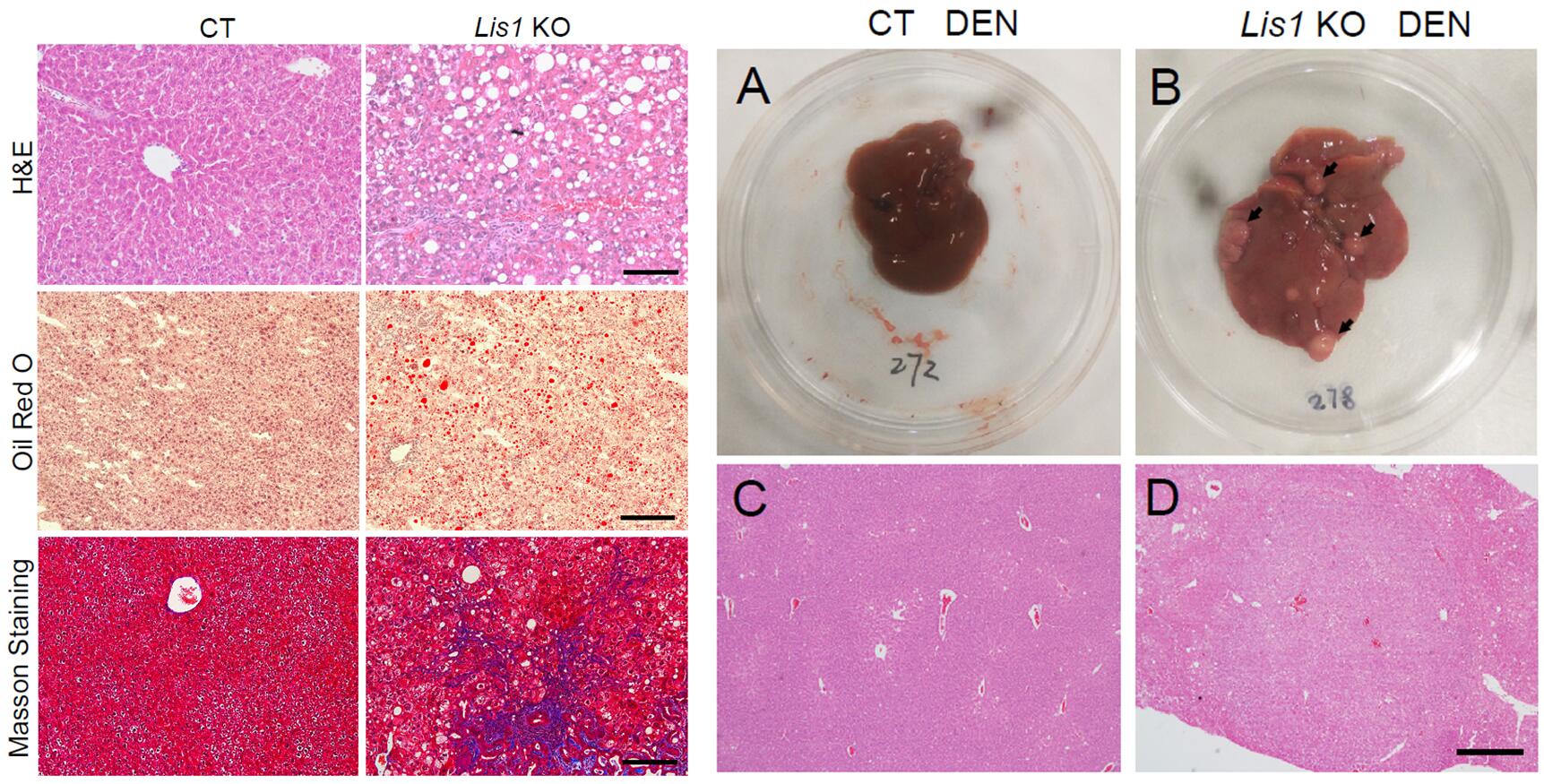Dr. Hai Song’s group published a research article on the Journal of Biological Chemistry online on February 23, 2018 with the title “Hepatic loss of Lissencephaly 1 induces fatty liver and accelerates liver tumorigenesis in mice”. Dr. Hai Song is the corresponding author and a PhD candidate Xiaoling Li is the first author.
The liver is a major organ in lipid metabolism and its malfunction leads to various diseases. Nonalcoholic fatty liver disease, the most common chronic liver disorder in developed countries is characterized by the abnormal retention of excess lipid within hepatocytes and predisposes individuals to liver cancer. Previous reports reported that the levels of Lissencephaly 1 (LIS1, also known as Pafah1b1) are down-regulated in human hepatocellular carcinoma. Following up on this observation, Hai Song’s group found that genetic deletion of Lis1 in the mouse liver increases lipid accumulation and inflammation in this organ. Further analysis revealed that loss of Lis1 triggers endoplasmic reticulum (ER) stress and reduces triglyceride secretion. Attenuation of ER stress by addition of tauroursodeoxycholic acid (TUDCA) diminished lipid accumulation in the Lis1-deficient hepatocytes. Moreover, the Golgi stacks were disorganized in Lis1-deficient liver cells. Of note, the Lis1 liver-knockout mice exhibited increased hepatocyte ploidy and accelerated development of liver cancer after exposure to the liver carcinogen diethylnitrosamine (DEN). Taken together, these findings suggest that reduced Lis1 levels can spur the development of liver diseases from steatosis to liver cancer and provide a useful model for delineating the molecular pathways that lead to these diseases
.
Right: Lis1 KO mice are more susceptible to carcinogen-induced liver tumor formation.
This work was supported by National Natural Science Foundation of China (NSFC) and Natural Science Foundation of Zhejiang Province (ZhejiangProvincial Natural Science Foundation).
Link:http://www.jbc.org/content/early/2018/02/23/jbc.RA117.001474.long



